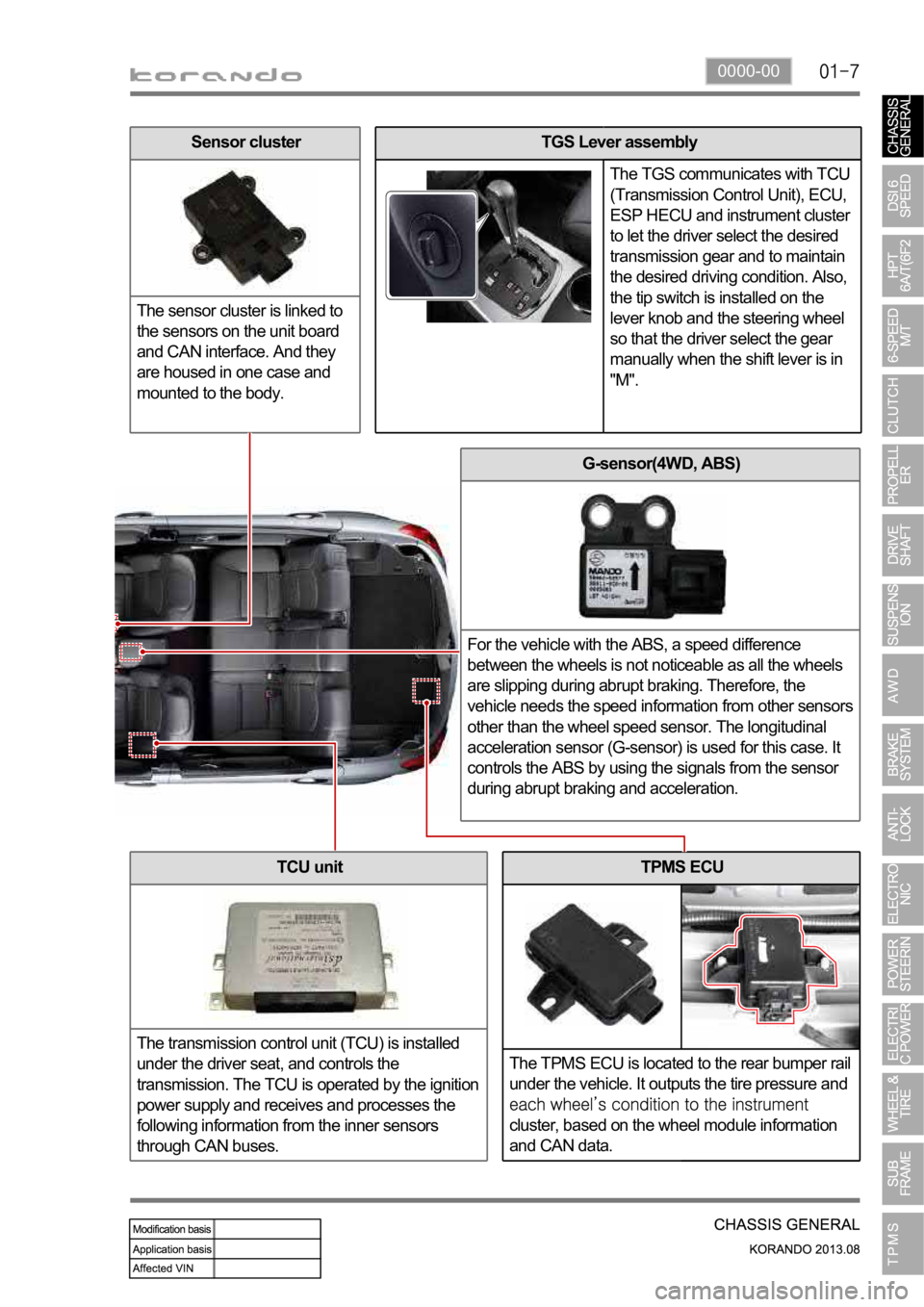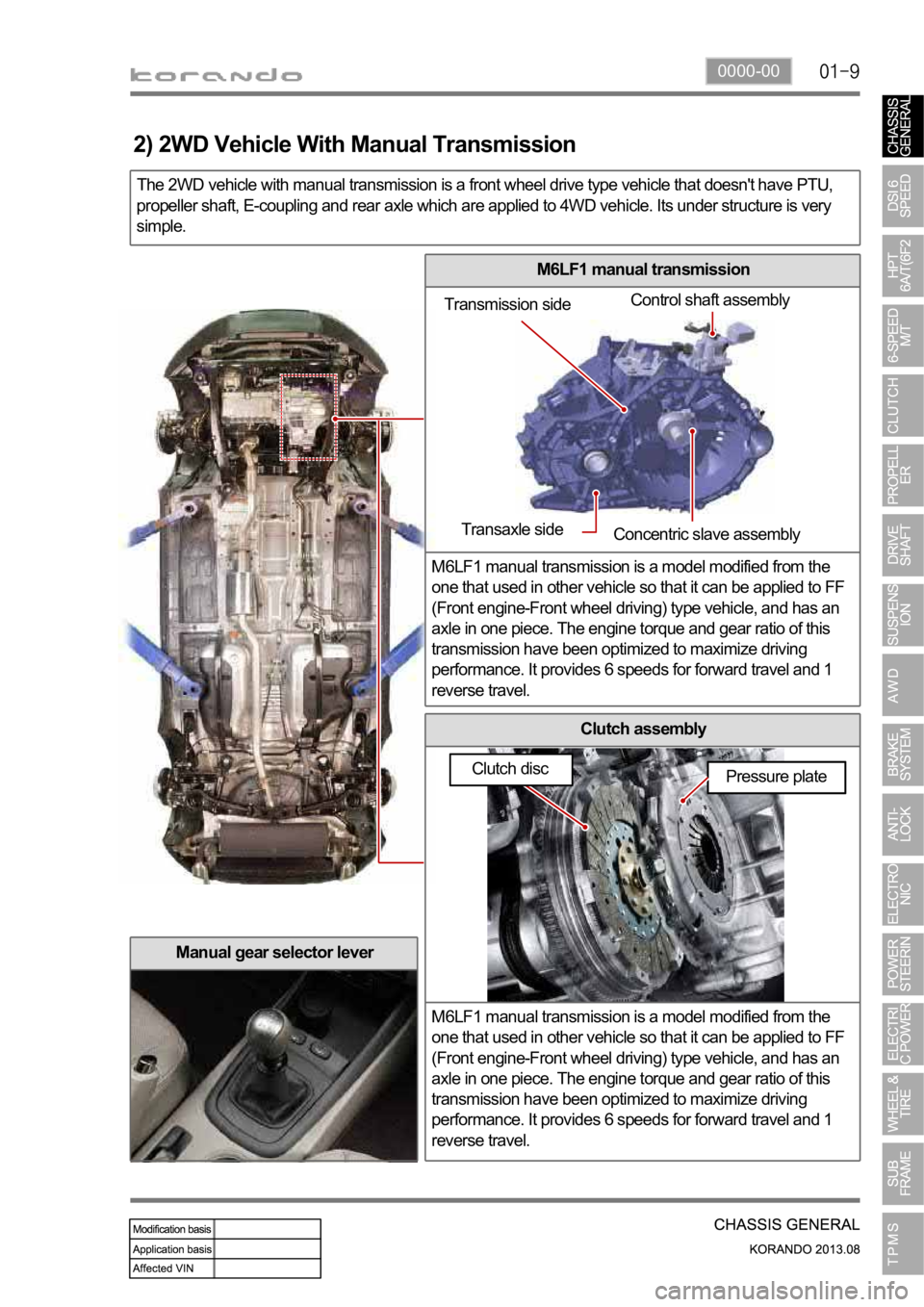Page 863 of 1336
Lower main panel switch
3) Lower Main Panel Switch
Rear fog lamp switch (EU ONLY)
Steering wheel heating switchHLLD (Headlamp Leveling Device)4WD LOCK switch
ESP OFF switch This helps the driver to drive the vehicle comfortably by operating the switch for the driving situation.
Page 864 of 1336
8510-00
4WD LOCK switch
This switch is of push lock type, which
enables to increase/decrease the
torque to the rear wheels in AWD
mode.
Steering wheel heating
switch
This switch is of push return type,
which is used to activate or deactivate
the steering wheel heating function.
ESP OFF switch
The ESP OFF switch is of push return
type, which is used to stop or resume
the ESP function.
4WD LOCK switch
This switch is of push lock type, which
enables to increase/decrease the
torque to the rear wheels in AWD
mode.
HLLD
(Headlamp Leveling Device)
The headlamp aiming can be adjusted
by using this dial-type switch.
Rear fog lamp switch
(EU ONLY)
This switch is of push return type,
which sends ON/OFF signal to the
BCM so that the BCM can switch on
the lamps by activating the rear fog
lamp relay.
Page 865 of 1336

How to operate 4WD LOCK switch
When the switch is pressed, 4WD LOCK mode is activated (4WD LOCK indicator lamp comes on). If
you press the switch again, the system enters 4WD AUTO mode (indicator lamp goes off).
4WD AUTO mode (normal)
4WD LOCK switch
(1) 4WD LOCK switch
This provides a slip control for the rear wheels depending on the driving conditions such as stationary,
straight-line motion or cornering motion.
4WD LOCK mode (4WD LOCK switch pressed)
In 4WD LOCK mode, the 4WD LOCK control works in the same way as the AUTO mode, but it
increases the driving force to the rear wheels more than in AUTO mode.
If the rear wheel speed is over 40 km/h, the vehicle enters into the 4WD AUTO mode automatically. If
it is below 35 km/h, the vehicle returns to the 4WD LOCK mode. -
-
4WD mode operation table
4WD LOCK switch Vehicle speed Drive mode
Deactivated (4WD AUTO) Unlimited 4WD AUTO
Activated (4WD LOCK) 40 km/h or higher 4WD AUTO
Activated (4WD LOCK) Below 35 km/h 4WD LOCK
4WD: 4WD stands for Four Wheel Drive and drives all the wheels to maximize the vehicle's driving
force on the unpaved road, rough road, steep hills, sandy or muddy road for enhanced driving
performance.
Electric AWD (All Wheel Drive): 4-wheel drive is an electric drive system in which the vehicle is
usually driving in 2WD mode but, if the vehicle determines that 4WD is needed because of the
differences in slip and cornering between front and rear wheels, road gradient and etc., it is switched
to 4WD automatically by the E-coupling control unit.
Page 985 of 1336

0000-00
TPMS ECU
The TPMS ECU is located to the rear bumper rail
under the vehicle. It outputs the tire pressure and
cluster, based on the wheel module information
and CAN data.
G-sensor(4WD, ABS)
For the vehicle with the ABS, a speed difference
between the wheels is not noticeable as all the wheels
are slipping during abrupt braking. Therefore, the
vehicle needs the speed information from other sensors
other than the wheel speed sensor. The longitudinal
acceleration sensor (G-sensor) is used for this case. It
controls the ABS by using the signals from the sensor
during abrupt braking and acceleration.
TCU unit
The transmission control unit (TCU) is installed
under the driver seat, and controls the
transmission. The TCU is operated by the ignition
power supply and receives and processes the
following information from the inner sensors
through CAN buses.
TGS Lever assembly
The TGS communicates with TCU
(Transmission Control Unit), ECU,
ESP HECU and instrument cluster
to let the driver select the desired
transmission gear and to maintain
the desired driving condition. Also,
the tip switch is installed on the
lever knob and the steering wheel
so that the driver select the gear
manually when the shift lever is in
"M".Sensor cluster
The sensor cluster is linked to
the sensors on the unit board
and CAN interface. And they
are housed in one case and
mounted to the body.
Page 986 of 1336

A/T assembly
Automatic transmission is available as 4WD- and 2WD-type,
and provides 6 speeds for forward travel and 1 reverse
travel. It is also equipped with the torque converter with inner
lock-up clutch and electronically controlled solenoid which
controls all hydraulic functions.
3. CHASSIS COMPONENT LAYOUT
PTU (Power Transfer Unit)
The PTU is a device that transfers the power
generated from the engine to the rear axle through
propeller shaft and E-coupling by changing the power
4WD vehicle.Rear axle assembly
The rear axle installed in this car is a removable
axle, called IRDA (Independent Rear Differential
Axle). The rear differential carrier is installed
directly on the sub frame, and there is an
independent suspension that allows each wheel
on the same axle to move vertically independentl
y
of each other with the universal joint and the slip
joint.
E-coupling control unit (E-Coupling ECU)
The E-coupling unit is a control unit which determines
the magnetic force by considering CAN signals (wheel
speed, engine torque, pedal opening, ABS/ESP CAN
signals, etc.) from other ECUs.
Inhibitor switch
Torque converter Oil pan
E-coupling sideRear axle side
Propeller shaft
1) 4WD Vehicle With Automatic Transmission
GSLDSLInhibitor switch
Torque converter Oil pan
Page 987 of 1336

0000-00
M6LF1 manual transmission
M6LF1 manual transmission is a model modified from the
one that used in other vehicle so that it can be applied to FF
(Front engine-Front wheel driving) type vehicle, and has an
axle in one piece. The engine torque and gear ratio of this
transmission have been optimized to maximize driving
performance. It provides 6 speeds for forward travel and 1
reverse travel.
Clutch assembly
M6LF1 manual transmission is a model modified from the
one that used in other vehicle so that it can be applied to FF
(Front engine-Front wheel driving) type vehicle, and has an
axle in one piece. The engine torque and gear ratio of this
transmission have been optimized to maximize driving
performance. It provides 6 speeds for forward travel and 1
reverse travel.
The 2WD vehicle with manual transmission is a front wheel drive type vehicle that doesn't have PTU,
propeller shaft, E-coupling and rear axle which are applied to 4WD vehicle. Its under structure is very
simple.
Manual gear selector lever
Transmission sideControl shaft assembly
Transaxle side
Concentric slave assembly
Pressure plate
2) 2WD Vehicle With Manual Transmission
Clutch disc
Page 989 of 1336
0000-00
Rear sub frame assembly for 4WD
The rear sub frame for 4WD vehicle consists of 4 body (bush)
mountings and 2 axle (direct) mountings which reduce the vibration from
the powertrain and road, and also control the torque.
Rear side
Front side Body mounting
Rear sub frame assembly for 2WD
The rear sub frame for 2WD vehicle functions in the same way as the
one for 4WD vehicle, but the structure is different from the one for 4WD.
It consists of 4 body (bush) mountings.
Body mounting
Body mounting Body mountingAxle mounting
Front side
Body mounting Body mounting
Rear sideBody mountingBody mounting
Page 994 of 1336
A. Indicators on instrument cluster
C. HECU assembly
The HECU assemblies for ABS and ESP have
similar appearance but they have different inner
structure and connector connections from each
other. D. Front brake assembly
The disc brake for 4WD vehicle is the same with
the one for 2WD vehicle.
7. BRAKE SYSTEM AND ESP SYSTEM LAYOUT
B. Master cylinder assembly
Description for master cylinder in this chapter is
based on ABS/ESP equipped vehicle. For CBS,
there is an extra pressure valve mounted to the
master cylinder.
CaliperDisc
Parking brake
warning light
ABS warning lamp
ESP indicator